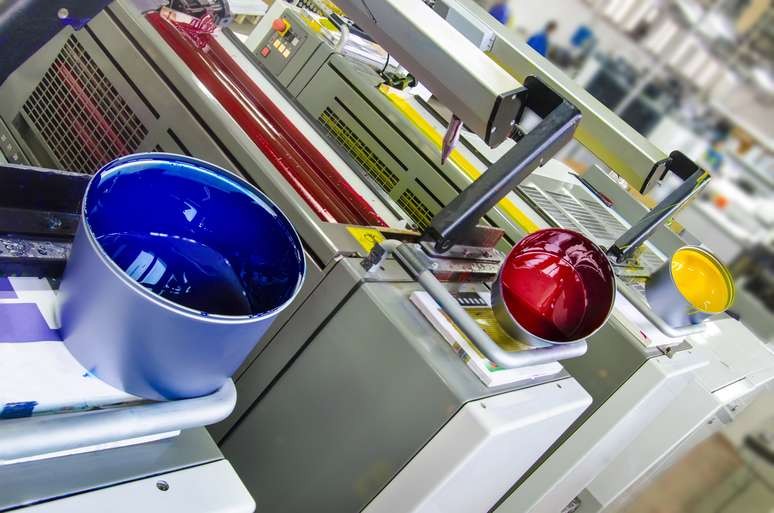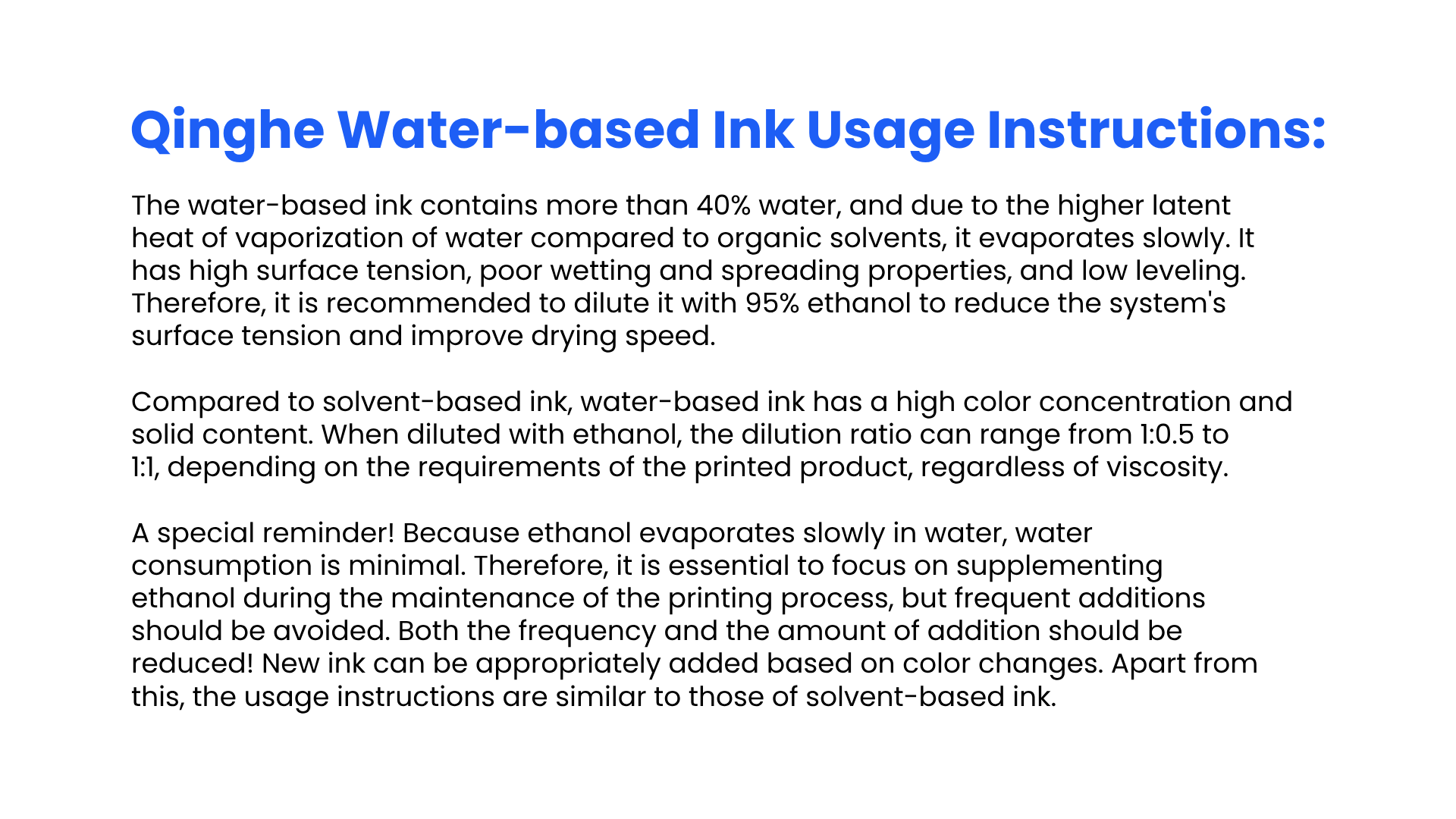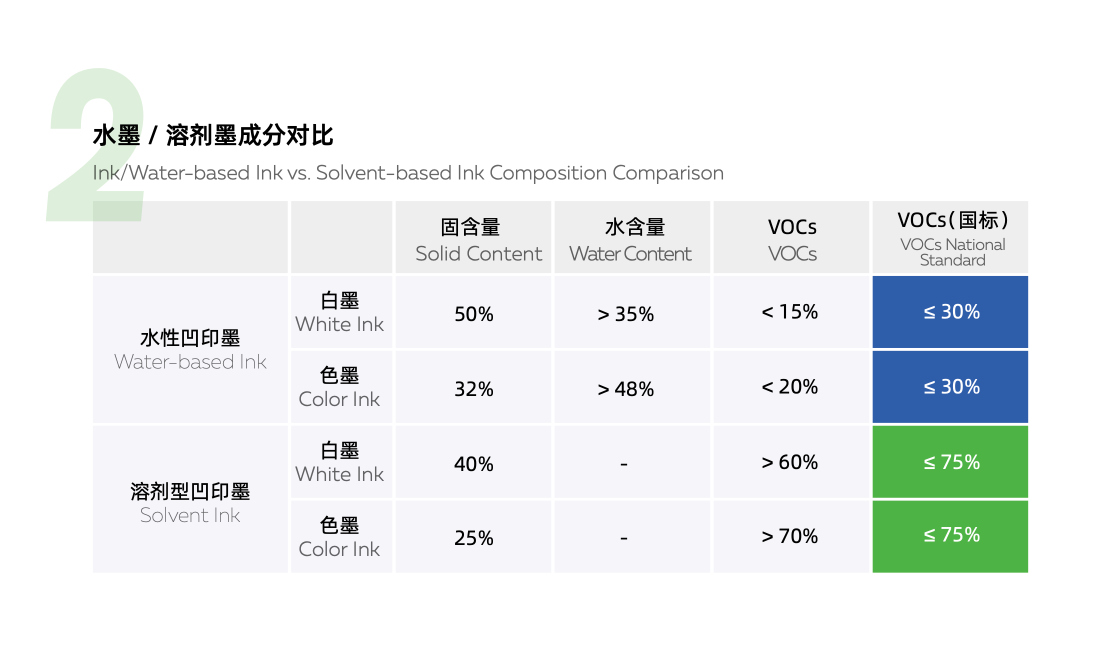Introduction

In today's environmentally conscious world, eco-friendly inks have revolutionized the printing industry. As businesses and consumers prioritize sustainability, the demand for eco-friendly inks has surged, leading to a significant shift in printing practices. This shift has impacted ink manufacturing and the way in which flexible packaging and gravure printing are approached. The evolution of sustainable printing is not just a trend; it's a necessity for a greener future.
The Rise of Eco-Friendly Inks
As businesses strive to reduce their carbon footprint, eco-friendly inks have emerged as a game-changer in the printing industry. These inks are formulated with environmentally friendly materials, making them biodegradable and non-toxic. The rise of eco-friendly inks reflects a broader commitment to sustainability and responsible production practices, driving innovation and creativity in ink manufacturing.
The shift towards eco-friendly inks also signifies a growing awareness of the environmental impact of traditional printing methods. By choosing to use these sustainable inks, businesses are actively participating in reducing air and water pollution caused by releasing harmful chemicals. This conscious decision benefits the environment and creates a positive brand image for companies that prioritize eco-friendly practices.
Understanding the Impact of Eco-Friendly Printing
Eco-friendly inks offer a multitude of benefits that extend beyond environmental protection.
The positive impact of using eco-friendly inks is far-reaching.
- Healthier Work Environments: Eco-friendly options eliminate harmful chemicals typically found in traditional inks, contributing to cleaner air quality and safer working conditions within ink manufacturing facilities.
- Improved Indoor Air Quality: Traditional inks often contain volatile organic compounds (VOCs) that can pollute indoor environments. Opting for eco-friendly alternatives helps reduce VOC exposure for end-users, promoting better health and well-being.
- Enhanced Business Reputation: Embracing eco-friendly inks demonstrates a strong commitment to environmental and corporate social responsibility, which can positively impact a business's image.
Businesses can contribute to a healthier planet and a safer community by choosing eco-friendly inks while strengthening their brand reputation.
The Evolution of Sustainable Printing
The evolution of sustainable printing encompasses more than just using eco-friendly inks; it also involves embracing sustainable practices throughout the entire print production process. From utilizing performance ink to implementing sustainable techniques in gravure printing, the evolution towards sustainability is evident across various aspects of print manufacturing.
In addition to eco-friendly inks, sustainable printing involves adopting energy-efficient printing technologies and processes. This includes utilizing advanced digital printing techniques that require less energy and produce minimal waste. By embracing these sustainable practices, print manufacturers can significantly reduce their environmental impact while delivering high-quality printed materials to their clients.
Eco-Friendly Inks Unveiled

One cannot ignore the groundbreaking innovation of Qinghe's Waterborne Polyurethane Inks regarding eco-friendly inks. These inks are revolutionizing the printing industry by offering a sustainable alternative that reduces environmental impact without compromising quality.
In recent years, there has been a significant shift towards sustainable ink manufacturing, driven by the growing awareness of the environmental impact of traditional ink production methods. Companies are now investing in eco-friendly technologies and processes to minimize their carbon footprint and promote a greener approach to printing.
Regarding flexible packaging options, it's essential to consider the environmental impact of materials such as PVC shrink film, polyethylene shrink film, and aluminum foil. By comparing these options, businesses can make informed decisions that align with their sustainability goals and reduce their ecological footprint.
Exploring the Innovation of Qinghe's Waterborne Polyurethane Inks
Qinghe's Waterborne Polyurethane Inks have gained attention for their ability to deliver vibrant colors and excellent adhesion while being environmentally friendly. These innovative inks are water-based and free from harmful chemicals, making them an ideal choice for businesses adopting sustainable printing practices.
Developing these eco-friendly inks represents a significant step forward in the quest for more environmentally responsible printing solutions. By embracing this innovation, companies can reduce their ecological impact without compromising print quality or performance.
The Shift Towards Sustainable Ink Manufacturing
The shift towards sustainable ink manufacturing is driven by a growing demand for eco-friendly alternatives that minimize environmental harm. With advancements in technology and processes, manufacturers can now produce high-quality inks using renewable resources and energy-efficient practices.
By prioritizing sustainability in ink manufacturing, companies can contribute to global efforts to reduce carbon emissions and promote a more environmentally conscious approach to printing. This shift represents a positive change that benefits both businesses and the planet.
Comparing Flexible Packaging Options: PVC Shrink Film, Polyethylene Shrink Film, and Aluminum Foil
When evaluating flexible packaging options for eco-friendly printing, factors such as recyclability, biodegradability, and overall environmental impact must be considered. Companies can make informed choices that align with their sustainability objectives by comparing materials like PVC shrink film, polyethylene shrink film, and aluminum foil.
Each material has its own set of advantages and drawbacks regarding environmental impact. By carefully weighing these factors against their specific needs, businesses can select packaging options supporting their sustainability commitment while maintaining product integrity.
How to Go Green in Printing

Making the Case for Performance Ink in Sustainable Printing
When it comes to sustainable printing, performance ink is a game-changer. This type of ink offers high-quality results while minimizing environmental impact, making it an ideal choice for eco-friendly printing practices. Its advanced formulation ensures vibrant colors and excellent adhesion, all while reducing waste and energy consumption.
Additionally, performance ink is designed to work efficiently with a wide range of printing materials, including recycled paper and cardboard. This versatility allows for greater flexibility in sustainable printing practices, as it can be used on various substrates without compromising quality. By accommodating different materials, performance ink reduces the overall environmental impact of printing processes.
The Advantages of Matte Ink in Eco-Friendly Printing
Due to its unique properties, matte ink has emerged as a popular choice for eco-friendly printing. Its non-glossy finish offers several advantages, making it ideal for packaging and labeling applications.
- Aesthetically pleasing: Matte ink provides a sophisticated, non-reflective look.
- Reduced glare: The matte finish minimizes light reflection, enhancing readability.
- Eco-friendly: Low VOC content and quick drying time contribute to a smaller environmental footprint.
By combining style, functionality, and sustainability, matte ink is a compelling option for businesses seeking environmentally responsible packaging and labeling solutions.
Sustainable Practices in Gravure Printing and Ink Marketing Factory
Incorporating sustainable practices into gravure printing and ink marketing factory operations is crucial for reducing the industry's environmental footprint. These facilities can significantly minimize their environmental impact by using renewable energy sources and implementing recycling programs. By prioritizing eco-friendly inks and embracing sustainable production methods, they can pave the way for a greener future in the printing industry.
In addition to using renewable energy sources and implementing recycling programs, gravure printing and ink marketing factories can also focus on reducing water consumption. By investing in water-efficient technologies and implementing water conservation measures, these facilities can minimize their environmental impact while also reducing their operational costs. Furthermore, by prioritizing eco-friendly cleaning solutions and optimizing their water usage, these factories can contribute to a more sustainable future for the printing industry.
Now you have an informative section about going green in printing, highlighting the benefits of performance ink, matte ink, and sustainable practices in gravure printing and ink marketing factories while incorporating key keywords throughout the content!
Printing on Plastic: Plastisol Ink vs Water-Based

When it comes to plastic printing, understanding plastisol ink's environmental impact is crucial. Plastisol ink contains PVC and phthalates, which harm the environment and human health. The production and disposal of plastisol ink contribute to air and water pollution, making it a less sustainable choice for printing on plastic surfaces.
Exploring the benefits of water-based ink for printing on plastic reveals a more eco-friendly alternative. Water-based inks are free from harmful chemicals, making them safer for the environment and human health. They also require less energy and resources to manufacture, reducing their carbon footprint. Additionally, water-based inks offer excellent adhesion and color vibrancy when printed on plastic, making them a high-quality and sustainable choice.
Furthermore, water-based inks are also easier to clean up and dispose of, reducing the environmental impact of the printing process. This makes them a more sustainable option for businesses looking to minimize their carbon footprint and reduce their overall environmental impact. With the increasing emphasis on corporate social responsibility, using water-based inks for printing on plastic is a smart choice that can help companies align with sustainable business practices.
The future of sustainable printing on plastic surfaces lies in the widespread adoption of water-based inks. As more businesses prioritize eco-friendly practices, there is a growing demand for environmentally responsible printing solutions. With advancements in water-based ink technology and increased awareness of environmental issues, the shift towards sustainable printing on plastic surfaces is inevitable.
The shift towards water-based inks for printing on plastic surfaces benefits the environment and offers improved quality and versatility. Water-based inks are known for their ability to produce vibrant colors and soft, breathable prints on plastic materials, making them a preferred choice for businesses looking to enhance the visual appeal of their products. Additionally, water-based inks are more flexible and less likely to crack or peel, providing a longer-lasting and more durable print result than plastisol ink.
Embrace Sustainable Choices in Ink Manufacturing and Marketing

As the demand for eco-friendly inks continues to rise, ink manufacturers and marketing teams must prioritize developing and promoting sustainable options. By investing in innovative technologies like waterborne polyurethane inks, companies can reduce their environmental impact while meeting consumer demands for greener printing solutions.
In addition to the environmental benefits, prioritizing eco-friendly inks can enhance a company's brand image and reputation. By demonstrating a commitment to sustainability, ink manufacturers can appeal to environmentally-conscious consumers and businesses, ultimately attracting a wider customer base. Embracing green printing solutions aligns with current market trends and positions companies as responsible corporate citizens, setting them apart from competitors in the industry.
The Importance of Prioritizing Eco-Friendly Inks in Printing
By prioritizing performance ink and matte ink options, businesses can achieve high-quality print results while minimizing environmental impact. Specifically, these inks:
- Reduce environmental footprint: By using renewable resources and lower VOC emissions.
- Enhance brand image: Demonstrating a commitment to sustainability and appealing to eco-conscious consumers.
- Offer cost savings: By reducing waste and disposal needs associated with traditional inks.
Embracing eco-friendly inks is a strategic move that benefits both the environment and the bottom line.
Taking the Next Step Towards Green Printing Practices
To truly embrace green printing practices, companies need to consider every aspect of their operations, from flexible packaging choices to gravure printing techniques. By transitioning from plastisol ink to water-based options for printing on plastic surfaces, businesses can make significant strides toward a more sustainable future. It's time to take action and commit to eco-friendly inks for a healthier planet.

